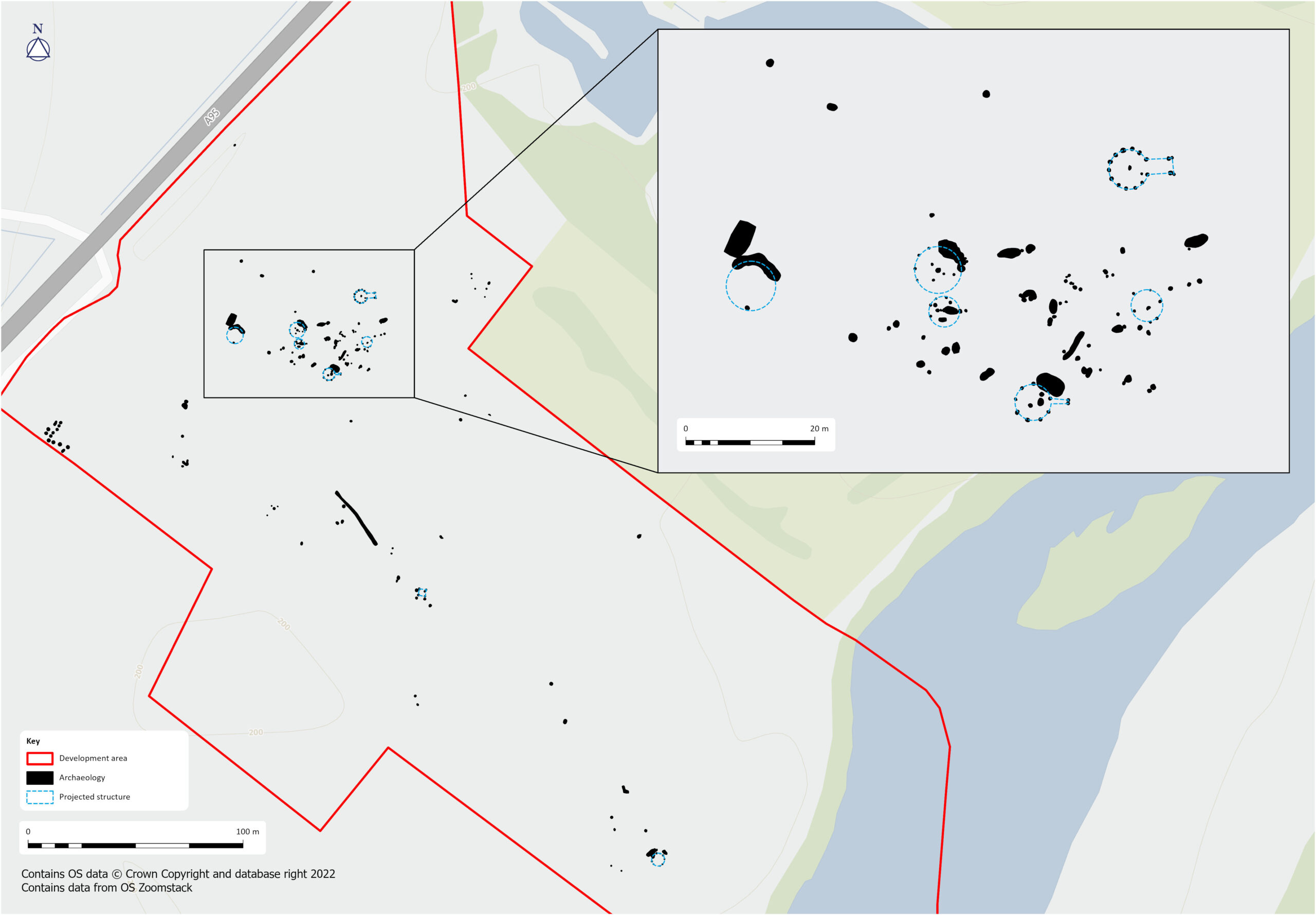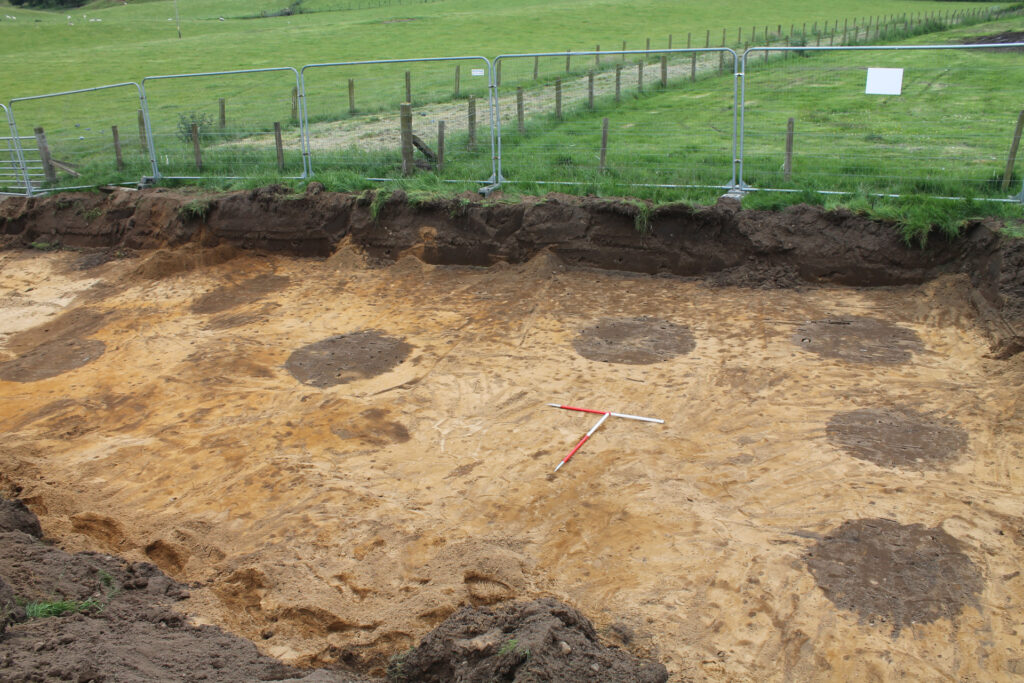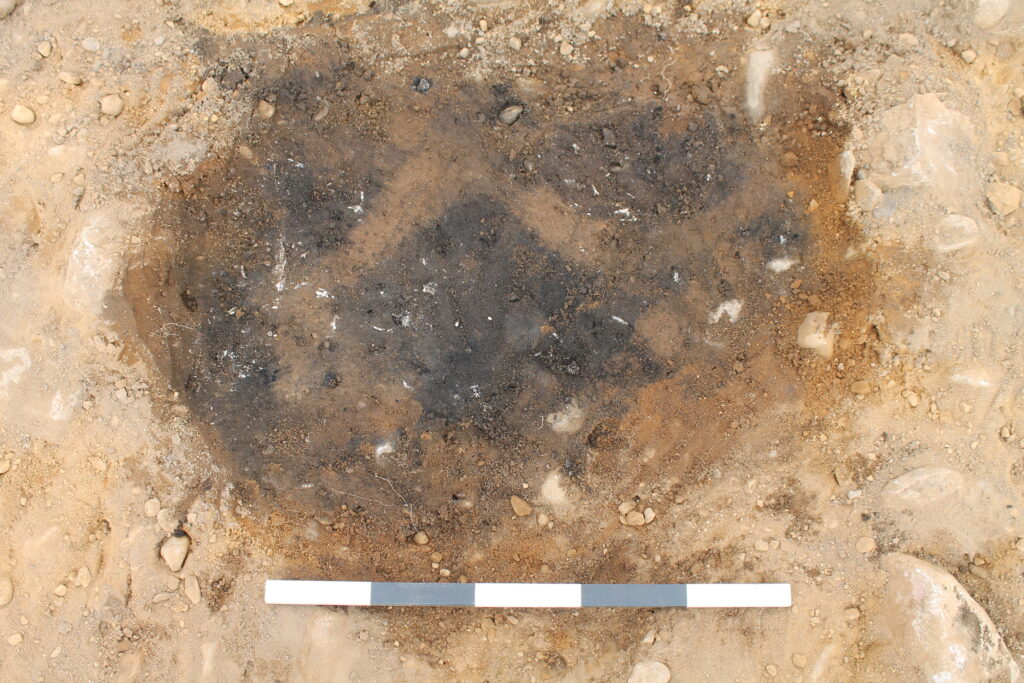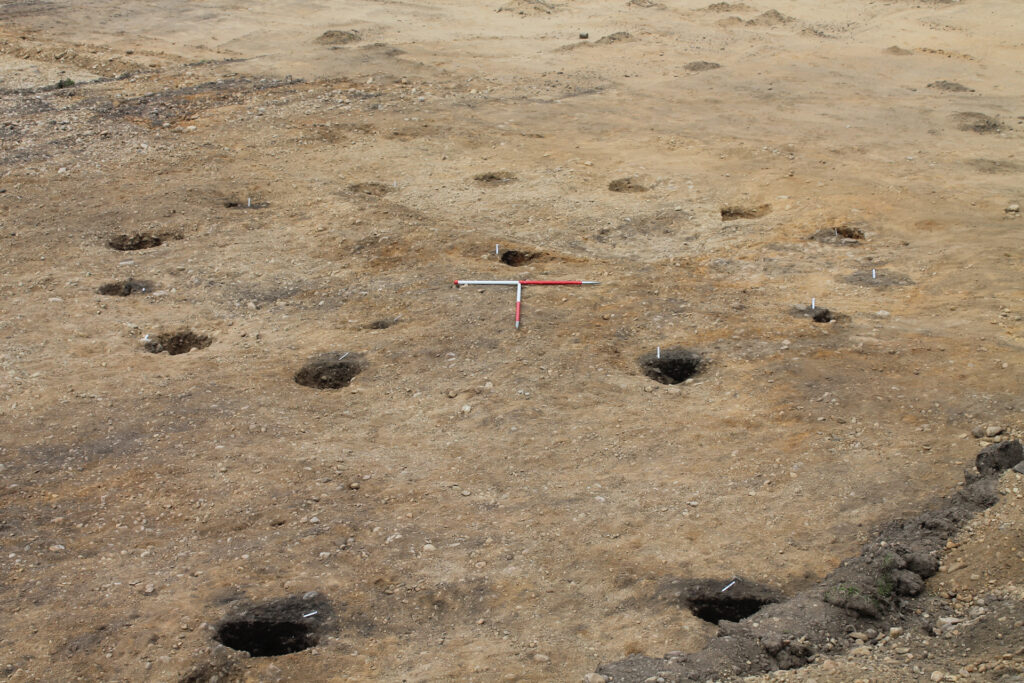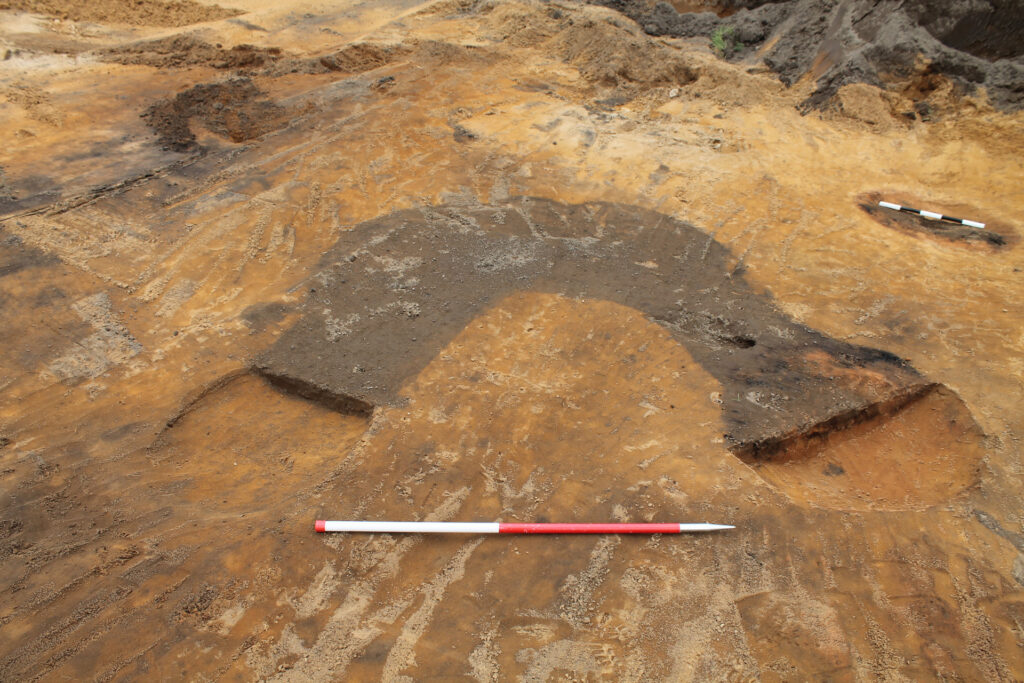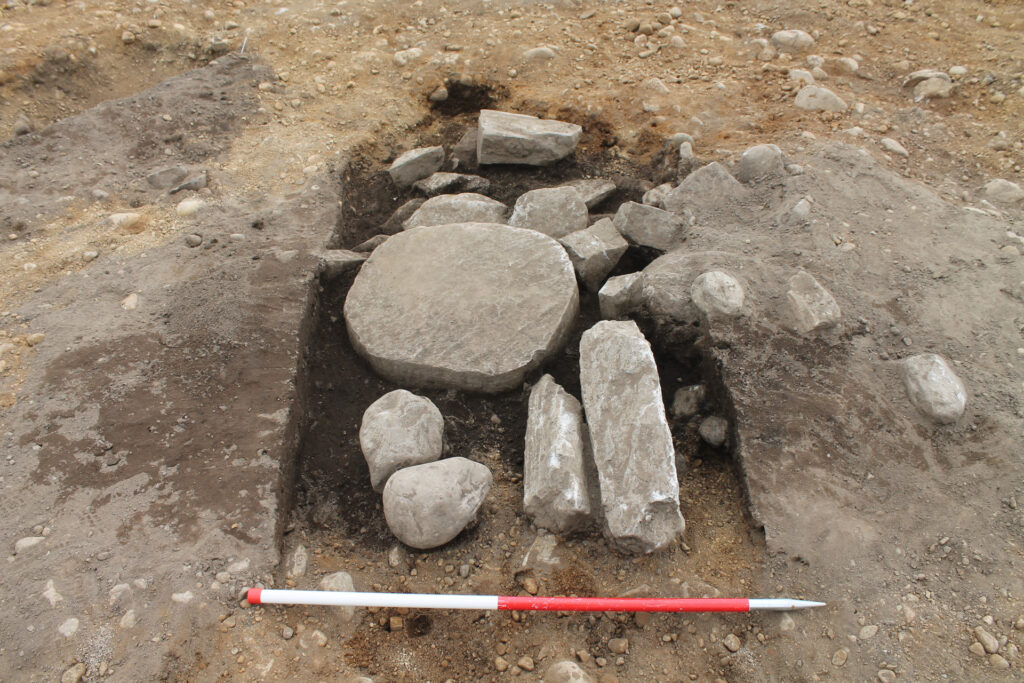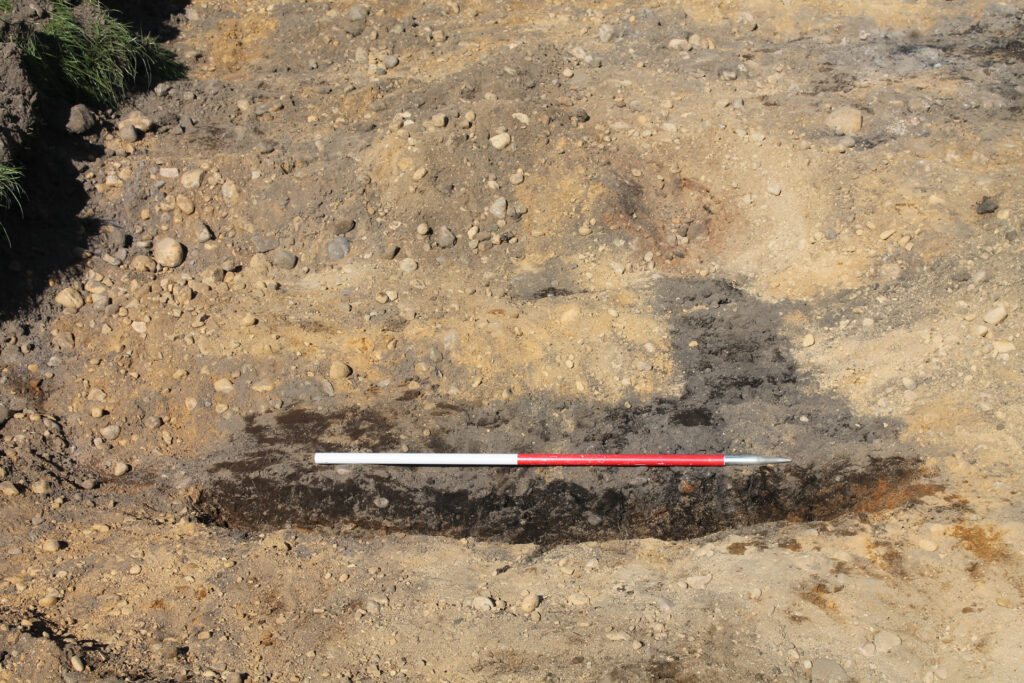During groundworks for the construction of The Cairn Distillery at Craggan, near Grantown-on-Spey, archaeological work was carried out by AOC Archaeology which uncovered evidence of multiple phases of activity on site, including funerary, settlement, grain processing and metal working activity.
The archaeological excavation and post-excavation works were kindly funded by Gordon and MacPhail.
An Important Excavation
Craggan has been one of only two modern excavations to take place in the Grantown-on-Spey region and has provided a rare opportunity to investigate a large previously unexplored area. Finding this multiperiod settlement is significant in characterising Iron Age and early medieval settlement in this region, as well as feeding into wider research. The early medieval settlement in particular is significant as often very little is known about rural settlements from this period as they are so challenging to identify. The discovery of a single human cremation from the site dating to the Late Neolithic is also significant as these are rare finds, with only one or two others securely dated from this period known in the Highlands. Located near the foothills of the Cairngorms, adjacent to the River Spey, Craggan’s location has attracted human activity since early prehistory. It is now the site of The Cairns Distillery, a new venture by Gordon and MacPhail. It is particularly fitting that they are now, in some form, continuing the long tradition of grain processing evident on the site since the Iron Age.
